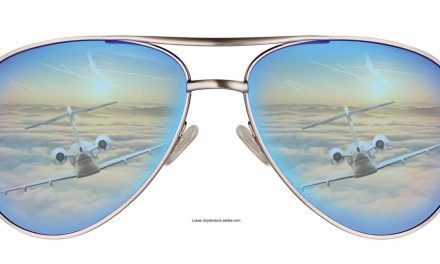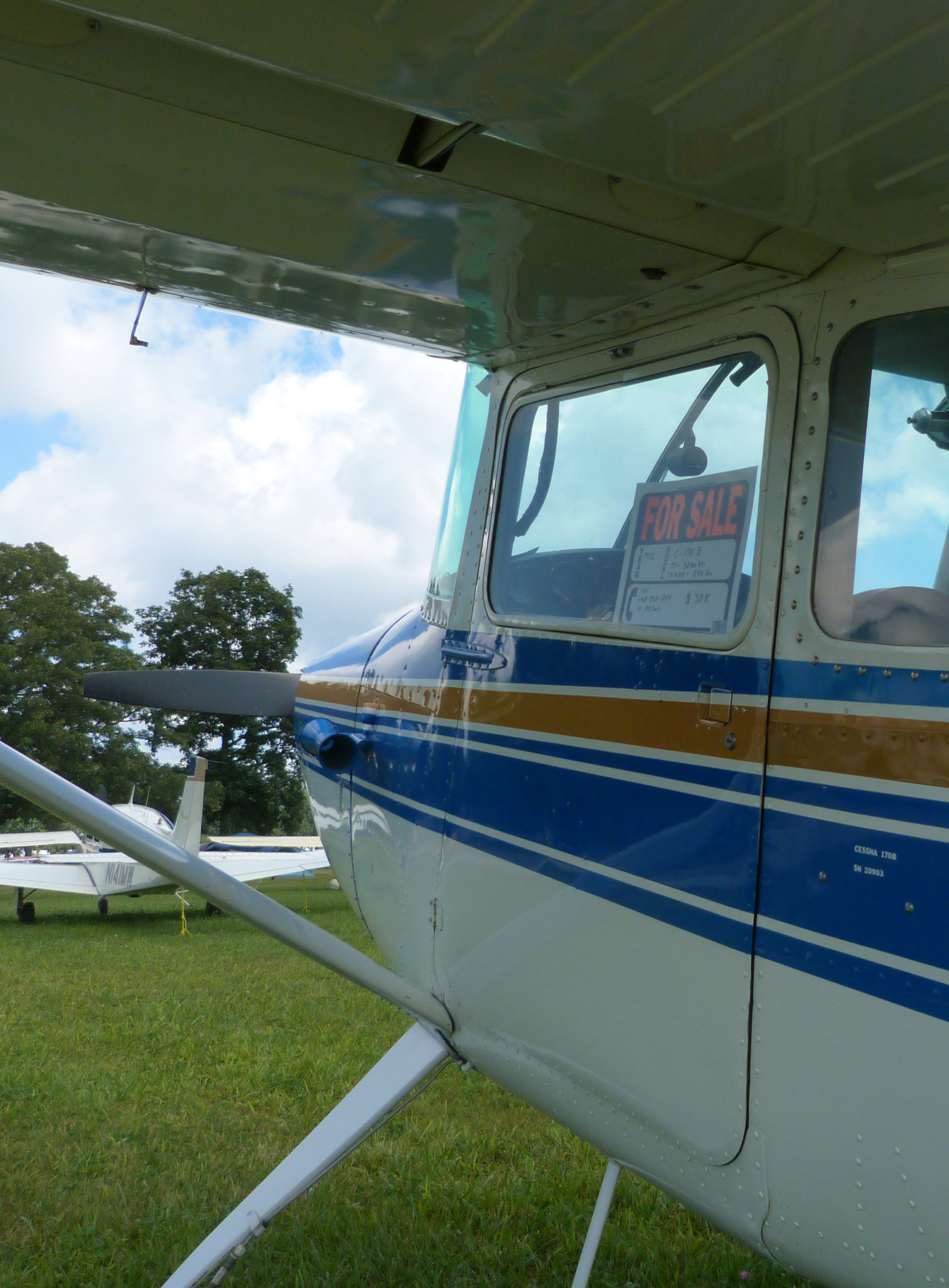I like new stuff. For years I told myself I bought things for the long haul. It didn’t matter if it was a car, boat or aircraft. But I was wrong, I didn’t keep anything very long. I ended up selling or trading after about two years. Drove my wife nuts. But, as prices have gone up and my traveling down, my ownership of a vehicle has been longer than I ever could have imagined. And that’s not a bad deal. I have more miles and hours on my “vehicles” than I ever did. If you take care of them, they can, in theory, last forever.
But with today’s prices and economic factors, new is not always possible. When I was growing up, my family always bought used cars. I can remember some of the great deals. High mileage California cars (we were in Iowa) without rust. They were cheap because they had high mileage, but they were also on the edge of worn out. When the car was worn out, we just sold it again.
There are a lot of old automobiles, tractors and equipment used today. Although, as I think about it, many of the older cars are rusted and beat up. Only the collectables are restored and kept in great shape. And many of those are used only for display and an occasional Sunday afternoon drive.
Compare that to the number of aircraft over 30 years old that are flying. Most of our flying fleet is “old” all-metal aircraft. If not all metal, a large portion for the construction is metal. Additionally, the majority of these aircraft are not restored aircraft, just maintained.
Which brings up the question, is there a life span to metal?
With an aircraft, the used, worn-out parts are a risk. But our planes keep flying.
Maybe there is a strain on the materials, but you wouldn’t know it in aviation.
But metal does fatigue. Age does affect the components. In a car, we push it to the side of the road. In an aircraft we land in a farmer’s field and hope we don’t get hurt. And if we take it back to the shop and FIX what was broken, we keep flying the aircraft. But does that mean it won’t break again?
Are There Any Limits?
I called a local mechanic and asked if there were any time or life limits on the airframe of the Cessna 172? No, not that he knew of. He did mention there were a few aircraft manufactured that might have some sort of limits, but they were typically limits based on certain parts of the aircraft. An example was the Cessna “push-me pull-you” Skymaster. It has a requirement that the wing spar must be inspected for cracks at 5000 hours (hard use at 3000 hours). But the rest of the aircraft…nothing like that. I did a flight review for a magazine in the Zlin 242L. It had an overhaul requirement of the main gear, the nose gear and even an inspection on the pressurized spar. So, there are some limits!
But overall, metal seems to last forever. As long as we protect it from stress, corrosion and wear, it should last a long time. Many an aircraft is out there with 10,000 hours on the airframe. Look at the airline industry, thousands of hours and the aircraft still keep flying. Repair the broken parts and it just keeps going. (I won’t mention Boeing.)
I Like Metal Aircraft Best…
But there are issues with metal. One of my favorite planes (I have a number of favorites) is the 1956 Cessna 310. Cool aircraft, great design, fantastic classic looks. But the age has put years of stress on the aircraft. The “over-the-wing” exhaust could cause corrosion to the spar and the fatigue of the parts could increase maintenance costs. Since most of my flights are straight and level, I don’t think I’d worry about metal fatigue as much as say, doing aerobatics in a 1946 Luscombe. My guess is heavy turbulence might be harder on an old plane. My wife just reminded me that the 310 is older than me and look at all the things that are failing on me! (I don’t think I need that reminder!)
Okay, What About the Rest?
How about fabric planes? Yes, fabric has a life span. I think fabric can last a long time. My Smith Miniplane was built in 1973 and had original fabric. It tested okay – but – maybe it should be recovered, just in case. Many of the airshow pilots I know strip and rebuild their aircraft regularly just to look for hidden damage. In most cases, that’s probably a good idea. One pilot uncovered his Pitts wing and discovered cracks that would have destroyed the aircraft (and him) in the next season. And like a metal aircraft, the storage conditions make a big difference in the life of the material.
When I think of wood, I think of old chairs that creak and moan when you sit in them. Glue that fails and the parts fall off. Not something that you’d want to happen in a wooden wing or fuselage. And the wooden glue joints can be hard to inspect. It’s not something that you’d want to miss.
And What About Composites?
I’ve seen boats and Corvettes that have lasted for years. But not very many aircraft. Most of the old Corvettes are collector cars that are only driven on nice days. Many insurance companies offer lower rates for collectable cars but it’s based on less than a certain number of miles a year. Something like 1000 miles. Not so in aviation. Of course, the average of less than 75 hours a year can stretch out the life span for quite a number of years, if all we based it on were hours. I’ve heard rumors that a few composite aircraft have a ten-year life span. After that they go back to the factory and get rebuilt – or thrown away? I’ve got no proof of that. Just rumors. But age could become critical as the hours and years are accumulated on the composite aircraft.
So, What Does All This Mean?
From the FAA – AC 120-84 Aging Aircraft Inspections and Records reviews
“On February 2, 2005, the FAA published the Aging Airplane Safety Final Rule (69 FR 5518). The final rule specifies mandatory aging airplane inspections for certain airplanes according to their years in service, as well as requiring damage-tolerance-based inspections and procedures to be included in the maintenance programs of certain airplanes.”
This was tailored more for the aircraft used in commercial operations but is important to consider for all aircraft operations. If there are issues with old aircraft having cracks or failures in the wing spars (like the Cessna 400 series and Skymaster’s), maybe all old aircraft owners should be concerned a bit.
The average life of an aircraft is wholly dependent on the storage conditions, location and maintenance. There isn’t one set number of years for any aircraft. In my opinion, metal aircraft have the longest life span, while receiving the least amount of care. Just look at the life span of an aircraft like the Cessna 172. The first year 172’s are 68 years old. 68 years old!! What’s a few more years going to hurt?
Of course, the Piper Tri-Pacer or Piper Cubs have been around longer and are still flying. They have metal tube frames and fabric covering. Some folks feel the fabric is better for old aircraft because it can be recovered easily compared to sheet aluminum. And they may be right.
What Does Insurance Think of Old Aircraft?
Usually about the same as new when it’s a simple aircraft with lots of aftermarket parts. Cessna 172’s, 182’s, Piper Cherokee models, etc. are simple, have high production numbers and lots of available parts. Compare that to something like a 1964 Cessna 336, which is a fixed tri-gear twin engine aircraft that had only 195 aircraft produced. It is a numbers game. If the aircraft can be maintained and kept in an airworthy status at a reasonable price, there isn’t as much to worry about. But that means parts are readily available and historically not much goes wrong with the aircraft.
It’s important to note the typical aviation insurance policy covers the failure of a part unless it is previously damaged, has a service bulletin or Airworthiness Directive or just wore out. Insurance doesn’t cover wear and tear items on any aircraft, new or old.
Most policies have a section in the exclusions such as – “This insurance does not apply: …to loss due and confined to wear, tear, deterioration, corrosion, freezing, mechanical, structural, hydraulic, pneumatic, or electrical failure, malfunction, or defect. Wear, tear, deterioration, corrosion, freezing, mechanical, structural, hydraulic, pneumatic, or electrical failure, malfunction, or defect of any engine, component, accessory, equipment or system is considered a failure, malfunction, or defect of the entire engine, component, accessory, equipment or system;…”.
The gist of it is, if it is a normal operation, “wear and tear” failure, it is not an insurance covered claim. If the “wear and tear” issue causes an accident or incident, the insurance might pay for the resulting damage, but still not cover the wear and tear part that caused it. I know that exclusion is a bit confusing.
It’s also important to note, if you have a claim that is covered, settlement is only required to put your aircraft back into the condition it was in before the loss. So, worn out parts do not always get new parts. And there are a lot of moving parts in an aircraft, which means a lot of “wear and tear.” The more complex the aircraft the more “wear and tear.”
Final thought. Simple, fixed gear, single engine aircraft “lead” sales in the old aircraft market. So if you are shopping, buy the newest you can afford, unless you want a particular model. In my opinion, it does really come down to reliability, abundant parts supply and cheaper operating costs. Which also means old, simple planes seem to last longer.






